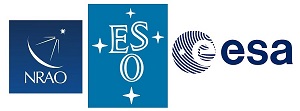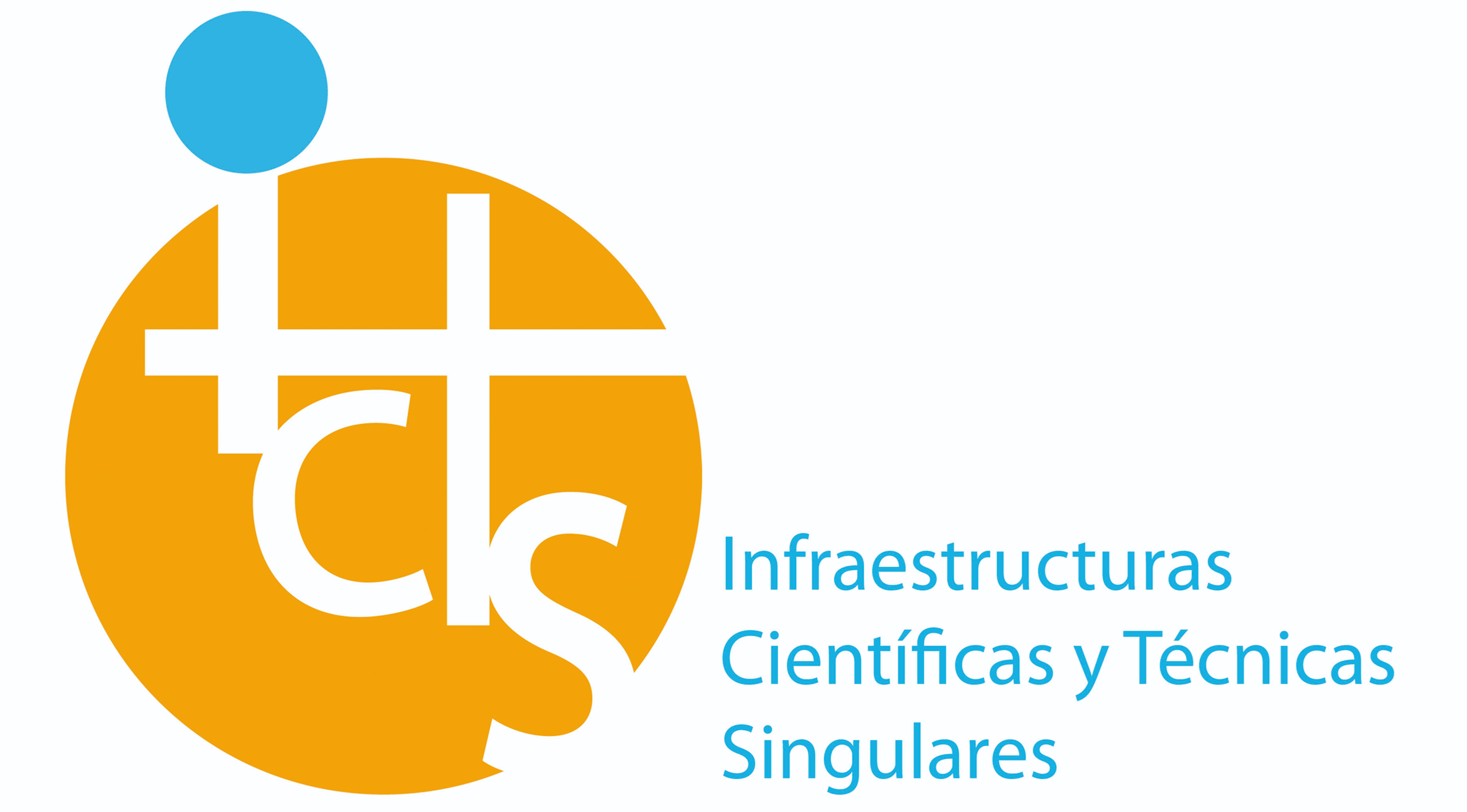Research projects
The Observatory of Yebes belongs to the General Directorate of the National Geographic Institute of the Spanish Ministry of Tansportes y Movilidad Sostenible. It participates in different projects with international partners and institutions for the development of radio astronomy receivers in different bands. Furthermore, the Yebes Observatory develops and manufactures ultra-sensitive cryogenic amplifiers based on HEMT (High Electron Mobility Transistors) devices. These amplifiers are used in highly sensitive receivers that equip the best radio telescopes, as well as receivers for remote sensing and interplanetary probe tracking stations. Most of our amplifiers have been installed in equipment from other observatories and foreign research centres.
RADIOBLOCKS
RADIOBLOCKS is a 4-year project funded by the EU's Horizon Europe Framework Programme with 10 M€, involving 33 major European radio astronomy research infrastructures, together with industry and academic partners from 9 European countries, Japan, Republic of Korea, South Africa and the United Kingdom.
RADIOBLOCKS aims to give maximum impetus to the world's leading research infrastructures in radio astronomy by developing the necessary common tools or building blocks in four major areas: correlators, detectors and devices, multipixel receivers and data processing. Engagement with industry to jointly develop advanced technologies will raise the technological level of all partners and strengthen their positions in the technology market.
ACME
ACME is a 4-year EU-funded project (HORIZON-INFRA-2023-SERV-01) coordinated by the French National Center for Scientific Research (CNRS) that aims to coordinate at the European level the access and cohesion between multiple leading research infrastructures in astroparticle and astronomy, providing access to instruments, data and expertise, focusing on what is known as multi-messenger astrophysics.
RedSKA
RedSKA is a 4-year project funded by the State Research Agency within the State Program to promote scientific-technical research and its transfer in thematic networks. Its objectives are to facilitate leadership in the use of SKA precursors by the Spanish community and preparation for the Key Science Projects, whose selection will assess the ability to provide resources to ensure the exploitation of data of the expected volume and complexity.
KIDsNet
KIDsNet is a 4-year project funded by the State Research Agency within the State Program to promote scientific-technical research and its transfer in thematic networks.
KIDs are a state-of-the-art sensing technology with multiple applications in the near future. This project is called KIDsNET: Maturing KIDs technology and will allow the union and coordination of groups from different disciplines with the common goal of maturing the technology through the developments carried out in the different groups. The network will allow to focus on potential applications such as radio astronomy, quantum technologies, particle physics and all those that may arise, not only in the scientific field but also in the commercial one. This will create a roadmap for the development of KIDs in the national context, which will place our country in an excellent position to compete with other groups in the context of developing future instrumentation for large international astrophysical facilities both on the ground and in space and encourage the creation of new collaborations and participation in future international calls for proposals from ESA, NASA or JAXA.
The Yebes Observatory contributes to this network with its long experience in very low noise cryogenic amplifiers at microwave frequencies, which are essential for reading the status of KIDs without degrading their sensitivity.
ASTROREC
4-year project co-funded by MCIN/AEI/10.13039/501100011033 and project code PID2019-107115GB-C22.
The coordinating project seeks to study the chemical complexity in cold clouds in the interstellar medium and in the outer layers of evolved stars rich in carbon, using the 30m radio telescopes of IRAM and the 40m radio telescope of the Yebes Observatory, as well as the NOEMA and ALMA interferometers. The main objective of the subproject “New generation of radio astronomical receivers for the search of heavy molecules in space” (ASTROREC) is the design, construction and installation of a very broadband cryogenic radio astronomical receiver, between 18 and 32 GHz frequency, with double polarization, receiver temperature below 20 K in the whole band and a spectral resolution of 15 KHz.
We gratefully acknowledge the support of project PID2019-107115GB-C22, co-funded by MCIN/AEI/10.13039/501100011033.
ORP
ORP is a 4-year project funded by the European Union's Horizon 2020 research and innovation program of the “Grant Agreement” No 10 with 15 million euros.
The ORP project arises from the union of two large collaborative networks for terrestrial astronomy, one in the optical domain (OPTICON) and the other in the radio wave domain (RadioNet) to which the National Geographic Institute has belonged since 2008.
The OPTICON-RadioNet PILOT (ORP) network brings together some twenty telescopes and telescope arrays. Building on the success and experience of the OPTICON and RadioNet networks, the main objectives of ORP are to harmonize observing methods and tools for ground-based optical and radio astronomy instruments and to provide researchers with access to a wider range of facilities.
RADIONET 1,2,3,4

RadioNet is an international project funded by the European Horizon 2020 program and brings together leading institutions in Europe, Republic of Korea and South Africa that manage and operate world-class infrastructures for radio astronomy research.
The program finances, among others, research projects, access of researchers to radio telescopes, organization and attendance at work meetings and congresses for the dissemination of European radio-astronomical infrastructures works, as well as a temporary exchange of personnel. The National Geographic Institute participates on RadioNet in several areas. In particular in the coordination of the Technical Operations Group of the European Network of VLBI and two research and technological development projects: AETHRA and BRAND
The two research and development activities in which the Yebes Observatory participates are:
-
-
AETHRA:“Advanced European Technologies for Heterodyne Receivers for Astronomy”. This project aims to exploit new technologies, such as the integration of superconducting and semiconductor microelectronic circuits, to reinforce European technological and scientific leadership in radio astronomy. This project seeks to improve radio astronomical receivers that allow an increase in sensitivity and observation speed in the most competitive radio astronomical infrastructures that Europe owns: the ALMA and NOEMA interferometers and the APEX and Pico de Veleta radiotelescopes.
The Yebes Observatory participates in this project, providing knowledge and technological developments in the area of low-noise cryogenic amplifiers and passive devices, as well as benchmarks for the development of other partners.
-
BRAND: “BRoad bAND EVN”. This project aims at the development and construction of a digital broadband receiver from 1.5 to 15 GHz of bandwidth. This receiver will be replicated and deployed in most EVN telescopes and will offer new features and a sensitivity level not available in other VLBI networks worldwide.
The Yebes Observatory participates in diverse tasks, such as the RFI measurement, the development of cryogenic hybrids, the measurement of the main cryogenic elements of the receivers, and the development of a broadband feed to be installed in the secondary focus.
-
Along with these activities, the Yebes Observatory is also in charge of coordinating the working group that manages the EVN and GMVA Technical Operations Group. This group meets every 9 months in different parts of Europe to coordinate the activities of both networks: the EVN and the GMVA
ALMA

ALMA (Atacama Large Millimeter / submillimeter Array) is the most advanced and sensitive millimetre interferometer in the world today. It is located at the top of the Chajnantor plateau at 5058 meters of altitude, in the Atacama desert, in Chile, and is operated by the European Southern Observatory (ESO) together with its US and Japanese international partners.
It is an interferometer composed of 66 reflector antennas of seven and twelve meters in diameter. Each reflector has an extremely precise surface for the observation of millimetre and submillimeter wavelengths.
The Yebes Observatory has participated in the development of receivers for bands 5, 7 and 9 in collaboration with the European institutes SRON and IRAM. It has supplied directly or indirectly (through Spanish companies) several hundred of low-noise cryogenic amplifiers for the intermediate frequency of the receivers. It is currently developing amplifiers to improve the noise and gain performance of its future receivers. Furthermore, it is a reference laboratory for the measurement of amplifiers supplied by other ALMA member radioastronomy institutes.
IRAM (NOEMA)

IRAM was founded in 1979. It is a French-Spanish-German institute whose partners are the French CNRS (Center National de la Recherche Scientifique), the German MPG (Max-Planck-Gesellschaft) and the Spanish IGN (National Geographic Institute). Its objective is the study of the universe, its origin and evolution using millimetre wave radio astronomy. It is currently considered a model of multinational scientific cooperation. It operates a state-of-the-art 30m diameter telescope in Pico de Veleta, Spain, and NOEMA, a 10-antenna 15m diameter interferometer located in Plateau de Bure (in the French Alps), at an elevation of 2550 meters. When NOEMA is completed with a total of 12 antennas, NOEMA will become the most advanced millimetre radio astronomy infrastructure in the Northern Hemisphere.
As part of the IGN, the Yebes Observatory participates in IRAM, through its technological developments in low noise cryogenic amplifiers. It has provided IRAM with the intermediate frequency amplifiers for its receivers, both in NOEMA and in the 30m radio telescope. It has also provided engineers and astronomers to train and collaborate in its laboratories and telescopes, integrating them into its work teams. The technical, advisory and executive committees are staffed by the IGN, who as a member also participates with an annual contribution to the institute's funds.
NANOCOSMOS

NANOCOSMOS in a 15 million euro project funded by the European Research Council (ERC-SyG-2013 Grant agreement number 610256) called Gas and dust form the stars to the laboratory: exploring the nanocosmos.
It aims to explain how the nanoparticles that make up the interstellar dust grains are formed, and what are the fundamental processes that give rise to chemical complexity both on Earth and in space. For this last objective, two actions are foreseen: the creation of a laboratory that allows studying chemical processes under conditions similar to those of the interstellar medium, and broadband observations with the 40m radio telescope in two frequency bands: from 32 to 50 GHz and from 72 to 90 GHz (up to 115 GHz in the laboratory).
As part of this project, the Yebes Observatory has set up, together with the CSIC, a molecular spectroscopy laboratory in which the signal calibration, reception and detection equipment has been installed in both frequency bands. It has the containers and distribution elements where the molecules and the necessary instruments to reproduce the environment of the interstellar medium are placed.
On the other hand, the Yebes Observatory has also designed, developed and built the necessary cryogenic broadband receivers for the 40m radio telescope, its distribution, its spectral detection and the data control, monitoring and analysis systems.
SKA

The Square Kilometer Array (SKA) is a global scientific and technological project to build the world's largest radio wave telescope, with one square kilometre (one million square meters) of collecting area. SKA will be a revolution in research, engineering and R&D. It is one of the greatest scientific and technological challenges in the history of astronomy, and as such, it will bring together a large number of the best scientists, engineers and managers in the world, in order to ensure the success of the project. Spain joined SKA in 2018, a project that currently has 13 full member countries.
The Yebes Observatory is participating in the definitive engineering works to improve the observation bands in the areas of amplifiers, feeds and study of the effects of interference (RFI).
JUMPING JIVE

JUMPING JIVE is a 3 million euros EU-funded project. It is within the Horizon 2020 program for a length of 4 years. Its objective is to carry Long Baseline Interferometry (VLBI) into the next decade with JIVE and the European Network of VLBI (EVN) as centres of recognized excellence in radio astronomy.
The project coordinates scientists and engineers from twelve institutes in eight European countries to define the future of VLBI for scientific applications and identify the technological innovations necessary to achieve it.
The Yebes Observatory coordinates one of the work packages: the integration of new elements in the European VLBI network.
DEVELOPMENT OF CRYOGENIC AMPLIFIERS FOR OTHER INSTITUTIONS (ESO, ESA, NRAO)

The experience and excellence in the development of cryogenic amplifiers for radio astronomy has led the Yebes Observatory to design, develop and build low noise cryogenic amplifiers for institutions such as the Southern European Observatory, the European Space Agency, the National Radio Astronomy Observatory from the United States and other institutes in different parts of the world. Furthermore, these amplifiers are being used for other purposes, such as quantum computing.
TECHNOLOGICAL DEVELOPMENT FOR OTHER INSTITUTIONS (NMA, FGI, GSI, BKG, NARIT)

The experience accumulated in the Yebes Observatory in the construction of cryogenic microwave receivers has allowed us to develop complete receiving systems for other foreign institutions, which has allowed the Yebes Observatory to be classified as a Center for Technological Development for the IVS. In this sense, three tri-band receivers have been built, one of which is in Japan, another in Ny Alesund (Norway), and a third in Santa María (Azores archipelago, Portugal). Moreover, receivers and phase calibration systems have been developed for the German Federal Cartographic Agency (BKG). Three broadband receivers have also been built for the Norwegian Cartographic Authority and the Finnish Geospatial Institute. Technological support is also currently being provided to the National Astronomical Research Institute of Thailand for the control of its radio telescope and the holography receiver.


